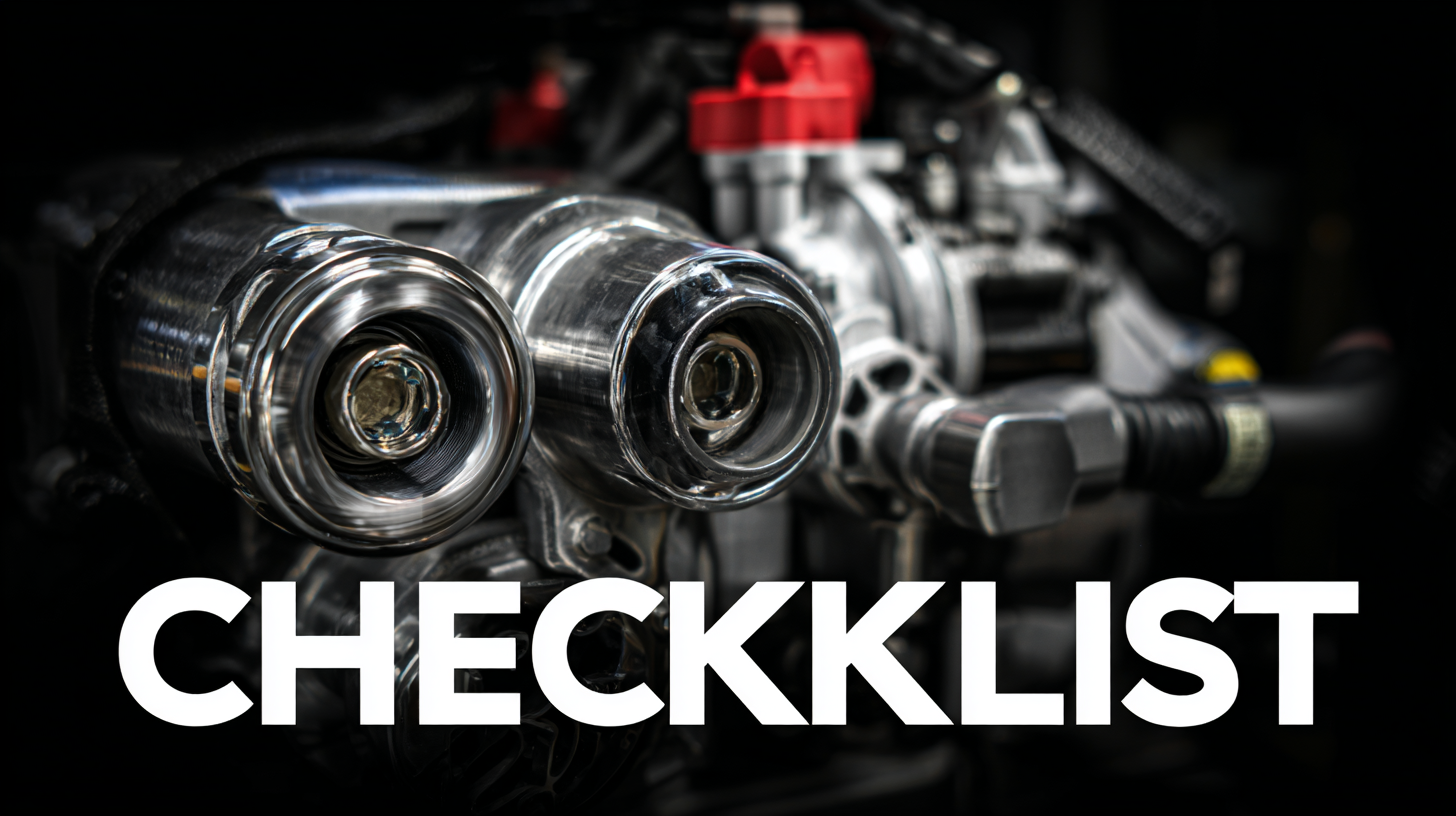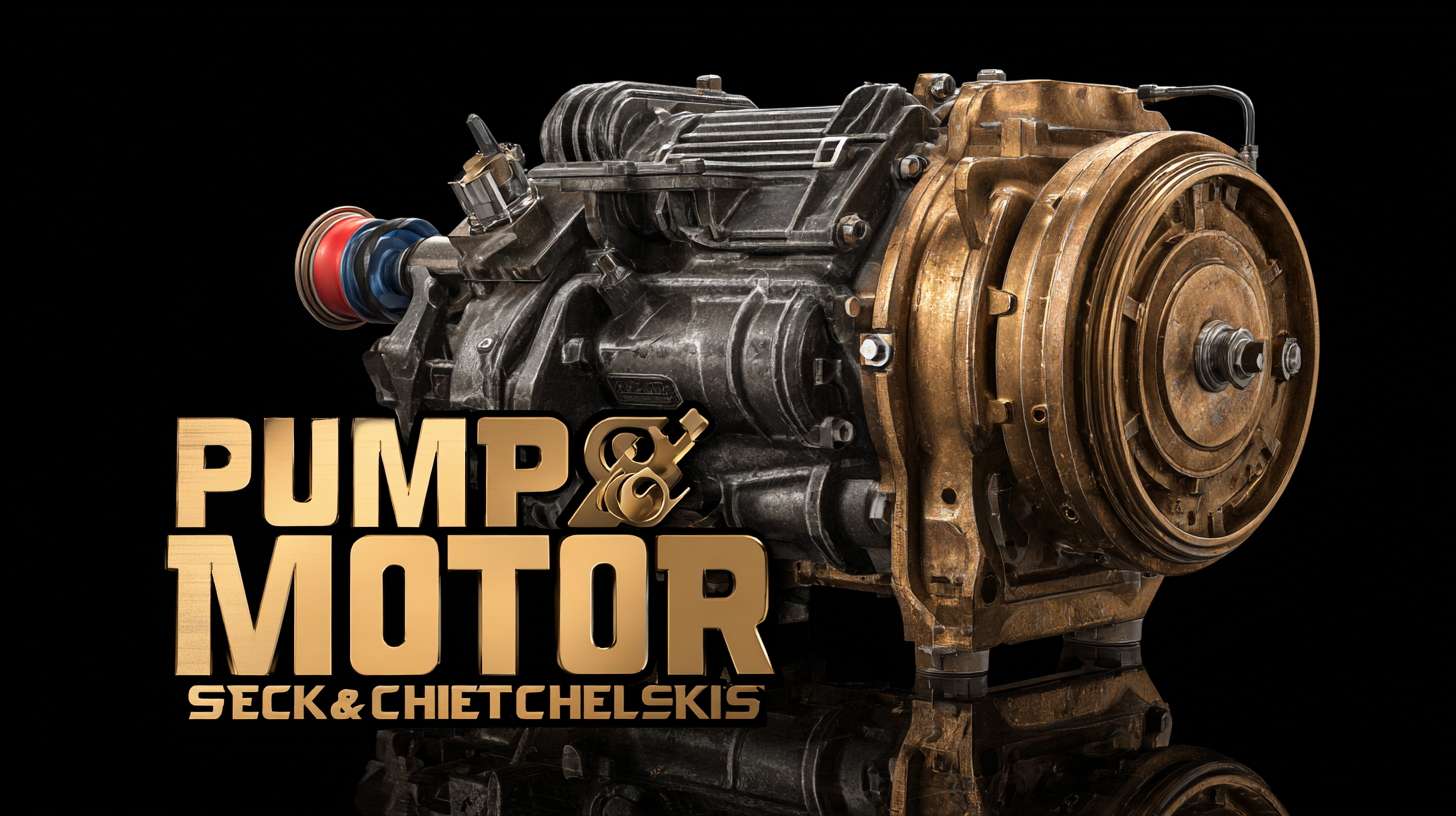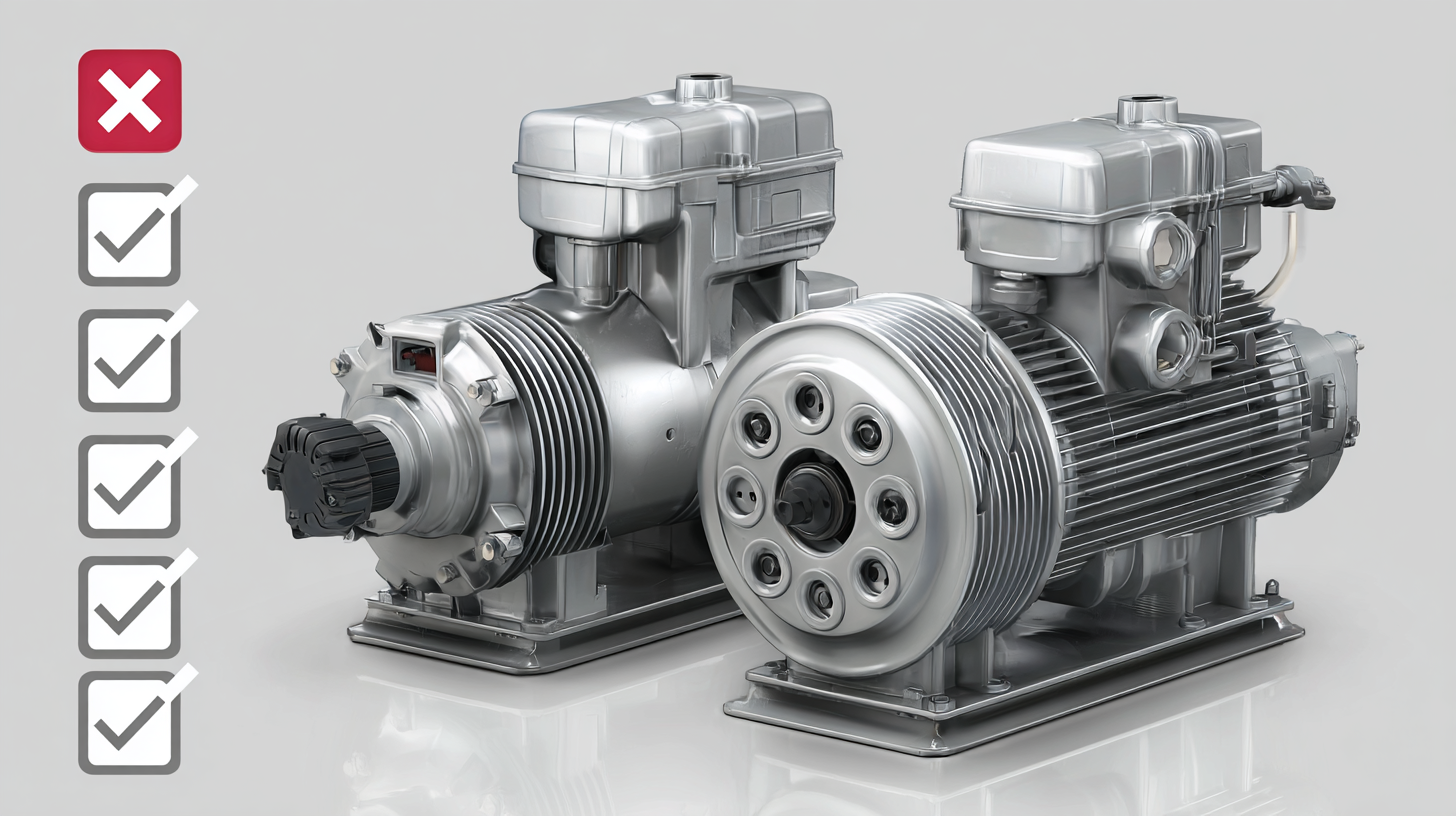

In today’s industrial landscape, the selection of efficient pump and motor systems is paramount for maintaining operational efficiency and reducing costs. According to a report by the Hydraulic Institute, improper pump and motor selection can lead to energy losses of up to 40%, significantly impacting both environmental sustainability and operational budgets. Additionally, the U.S. Department of Energy estimates that optimizing these systems can result in energy savings of approximately $4 billion annually across various sectors.

With the multitude of options available, choosing the right pump and motor can be daunting. It requires a thorough understanding of your specific requirements, including flow rate, pressure, and fluid characteristics, all of which are critical to ensuring system reliability and longevity. This ultimate checklist aims to guide you through the intricacies of selecting the best pump and motor for your needs, helping you to avoid common pitfalls and make informed decisions that align with industry best practices.
When selecting a pump and motor, understanding key regulatory standards is crucial for ensuring compliance with international import and export certifications. Regulatory bodies like the American National Standards Institute (ANSI) and the International Organization for Standardization (ISO) provide essential guidelines that manufacturers and importers must adhere to. For instance, ANSI/HI standards specify performance metrics for pumps that ensure they meet efficiency and safety requirements, while ISO 9001 focuses on quality management systems. According to a report by MarketsandMarkets, the global pump market is expected to grow from USD 60 billion in 2020 to USD 85 billion by 2026, highlighting the increasing importance of adherence to these standards.
**Tip:** Always verify that your pump and motor comply with local and international standards before making a purchase. This can prevent costly returns and ensure smooth operations in the long run.
Furthermore, understanding the certifications required for different regions is essential. For example, CE marking in Europe signifies that a product meets safety and environmental standards, while UL certification in the U.S. assures consumers of safety compliance. The implications of non-compliance can be severe, including hefty fines and legal action. A recent study indicated that companies face an average of 20% loss in revenue due to non-compliance issues.
**Tip:** Research the specific regulatory requirements for your target market and consult with industry experts to stay updated on changes that might affect your pump and motor selection.
This chart illustrates the key regulatory standards for pump and motor import and export certifications, focusing on the percentage of compliance among various standards.
In the global market, compliance is not just a legal requirement; it is a crucial factor that ensures the longevity and efficiency of pumps and motors. Understanding the various international standards, such as those set by ISO and IEC, can significantly impact your selection process. These standards encompass safety, performance, and environmental considerations, assuring that the products meet rigorous quality benchmarks acceptable across borders. Compliance not only provides you with peace of mind but also enhances the credibility of your operations in international trade.
Moreover, being compliant can facilitate smoother transactions and partnerships in different regions. When selecting pumps and motors, it is vital to consider documentation and certification of compliance. This includes checking for appropriate labeling, which indicates that the product meets specific international criteria. By prioritizing compliance, companies can mitigate risks associated with cross-border trade, such as fines, delays, or even product recalls. Thus, a keen understanding of the compliance landscape can empower businesses to make informed decisions that ultimately foster successful trade relations.

When navigating import and export certification processes, particularly in the context of rapidly evolving international regulations, businesses must remain vigilant. Recent developments highlight the increasing complexity of compliance obligations across various markets. For instance, the global shift towards strict data protection regulations, as seen with China's Personal Information Protection Law, signifies a pivotal moment for companies involved in cross-border transactions. According to industry reports, businesses may face fines of up to 4% of their annual revenue for non-compliance, underscoring the importance of thorough understanding and adherence to these laws.
In addition, varying certification requirements for specific industries, such as food or electronic goods, necessitate tailored strategies for successful market entry. The recent BIS certification guidelines in India outline that 90% of electrical devices must meet specific safety standards, alongside a streamlined certification process to facilitate compliance for foreign manufacturers. Businesses aiming to expand their reach must carefully assess these requirements to avoid potential disruptions in their supply chains. Adopting a systematic approach to understanding and fulfilling these regulatory needs can significantly enhance a company’s competitiveness in the global marketplace.
| Criteria | Description | Importance (1-5) |
|---|---|---|
| Pump Type | Identify the suitable pump type (centrifugal, positive displacement, etc.) for the application. | 5 |
| Motor Type | Select motor type (AC, DC, synchronous, etc.) based on power requirements. | 5 |
| Flow Rate | Determine the required flow rate for your process. | 4 |
| Head Pressure | Calculate the total head pressure needed for the application. | 4 |
| Energy Efficiency | Consider energy efficiency ratings to reduce operational costs. | 5 |
| Maintenance Requirements | Evaluate how easy it is to maintain the pump and motor. | 3 |
| Certifications Needed | Identify necessary import/export certifications for compliance. | 5 |
| Budget Constraints | Understand your budget limits for equipment purchase. | 4 |
In today's competitive market, choosing the right certifications can significantly enhance the accessibility of your products. Recent trends in sustainable agriculture highlight the increasing importance of certification. For instance, tools like the Certified Evaluation Tool for Agriculture Resources Analysis of Natural Farming (CETARA-NF) enable producers to self-certify their practices. This not only assures consumers of product quality but also streamlines market entry, especially for organic and sustainably sourced goods. As sustainability becomes a purchasing criterion for 66% of consumers, businesses that leverage appropriate certifications can differentiate themselves and tap into a growing consumer base.

Moreover, according to a report from the Global Certification and Accreditation industry, the market is projected to grow at a CAGR of around 8% through the next five years. This growth underscores the vital role of certifications in establishing trust and credibility in the supply chain. Selecting the right certifications tailored to specific markets can result in improved sales performance; for instance, products with credible certifications are likely to enjoy a 20% increase in market penetration compared to those without. Thus, organizations must strategically align their certification choices to bolster their market presence and meet consumer demands effectively.
In the pump and motor industry, achieving certifications is crucial for ensuring product reliability and compliance with safety standards. Common challenges include understanding the complex certification requirements and the lengthy approval processes that can delay time-to-market. According to a report by the Hydraulic Institute, approximately 30% of manufacturers encounter significant obstacles due to evolving regulations. Consequently, staying informed about industry standards such as ISO 9001 can help streamline the certification process.
Tip: Regularly attend industry workshops and webinars focused on certification processes to stay updated on changes and best practices. Networking with other professionals can also provide insights into effective strategies for overcoming certification hurdles.
Another challenge faced by manufacturers is implementing necessary modifications to meet specific certification criteria. A survey conducted by the American Society of Mechanical Engineers (ASME) found that 40% of companies had to redesign their products in response to certification feedback. Effective project management and proactive communication with certification bodies can mitigate these issues, allowing for smoother transitions from compliance testing to market introduction.
Tip: Create a detailed project timeline that includes milestones for certification application, testing phases, and expected outcomes to maintain focus and accountability throughout the certification journey.